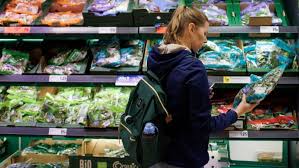Inflation stands still: A “glimmer of hope” or a false dawn for your wallet?

UK inflation
In a surprising turn for economists and policymakers, the UK’s inflation rate held firm at 3.8% in September, defying widespread predictions of a rise. This marks the third consecutive month that the Consumer Price Index (CPI) has remained unchanged, offering a fragile sign of stability in the nation’s long battle with the cost of living. However, for millions of households, this statistical stalemate feels a world away from the relief they desperately need at the checkout counter.
The most significant development within the data was the long-awaited slowdown in food price inflation, which fell to 4.5% annually from 5.1% in August. This is the first time since May of last year that the cost of food and non-alcoholic drinks has shown a deceleration. Yet, experts are quick to caution that this doesn’t mean your grocery bill is getting cheaper; it simply means it’s rising at a slightly slower, albeit still painful, pace.
The Supermarket Reality: A Tale of Two Carts
For families like Kayleigh Brannan’s, who is navigating the new expenses of feeding her baby, Hadley, solid foods, the figures offer little comfort. “You can see the prices going up,” she notes, highlighting the particular pinch of rising meat costs. This sentiment is echoed across the country, where the theoretical slowdown in inflation collides with the reality of a weekly shop that remains significantly higher than a year ago.
The Office for National Statistics (ONS) chief economist, Grant Fitzner, described the food price dip as a “small glimmer of hope” but tempered optimism by noting that prices are “still running quite high.” The decline was driven by modest price reductions on staples like bread, milk, cheese, and certain vegetables. However, this was offset by persistent and sharp increases for other items. Red meat, coffee, and chocolate continued their upward climb, driven by complex global factors including production issues and adverse weather in key growing regions.
James Walton, Chief Economist at the Institute of Grocery Distribution, confirmed that the numbers “align with our predictions that food inflation will start to moderate.” However, he reinforced the crucial distinction for consumers: “prices for shoppers are still going up year on year, just more slowly.”
The Political and Economic Balancing Act
The stagnant inflation figure presents a complex picture for Chancellor Rachel Reeves. While the avoidance of a predicted rise to 4% provides a minor reprieve, the rate remains stubbornly close to double the Bank of England’s 2% target. The Chancellor expressed that she was “not satisfied with these numbers,” acknowledging that “for too long, our economy has felt stuck, with people feeling like they are putting in more and getting less out.”
From a policy perspective, September’s inflation figure is critically important as it is traditionally used to uprate benefits for the following April. This means millions on state support are now likely to see their payments increase by 3.8% next year. The state pension, governed by the triple-lock mechanism, is set for a larger increase, as it will rise by the higher of inflation (3.8%) or average earnings growth (4.8%).
For the Bank of England, the data injects a new layer of uncertainty into its interest rate decisions. The fact that inflation did not accelerate as forecast improves the chances of an interest rate cut before the end of the year. Markets are now cautiously pricing in a potential reduction to 3.75% by December, offering a future prospect of lower mortgage and borrowing costs.
A Cautious Path Forward
So, what does this all mean for the average household? The consensus among analysts like Paul Dales of Capital Economics is that “this will probably be the peak in inflation.” With the dramatic impact of last year’s energy price surges set to fall out of the annual calculation, a gradual decline is anticipated.
However, the road back to 2% is expected to be long and winding, with some forecasts not seeing the target met until late 2026. The Chancellor’s upcoming budget will be a key test, with pressure to provide cost-of-living support without injecting further inflationary pressure into the economy. For now, the “glimmer of hope” is just that—a small, tentative sign that the economic tide may be slowly turning, even if the waters remain choppy for some time to come.
FAQ Section
Q1: If inflation is slowing, why do my groceries still feel so expensive?
A: The slowdown in food price inflation to 4.5% means prices are still increasing compared to last year, just at a slightly slower rate. Your grocery bill is not falling; it is continuing to rise, which is why the financial pressure at the checkout remains intense.
Q2: What does the September inflation rate mean for my benefits?
A: The government typically uses September’s inflation figure to determine the following April’s benefit uprating. With inflation at 3.8%, millions receiving benefits are likely to see a corresponding 3.8% increase in their payments next spring.
Q3: Will the state pension also rise by 3.8%?
A: No. The state pension is protected by the “triple lock,” meaning it increases by the highest of three measures: inflation, average earnings growth, or 2.5%. As average earnings growth (4.8%) is higher than September’s inflation (3.8%), the state pension is expected to rise by 4.8% next year.
Q4: Does this inflation data make an interest rate cut more likely?
A: Yes, potentially. The fact that inflation did not rise as the Bank of England had forecast improves the chances of an interest rate cut in the near future. Financial markets are now speculating a cut could come as early as December, which would lower costs for mortgages and loans.
Q5: Which everyday items are still seeing the biggest price jumps?
A: While some staples have seen slight price drops, items like red meat, coffee, and chocolate are experiencing strong and ongoing price increases due to global production challenges and supply chain issues.



